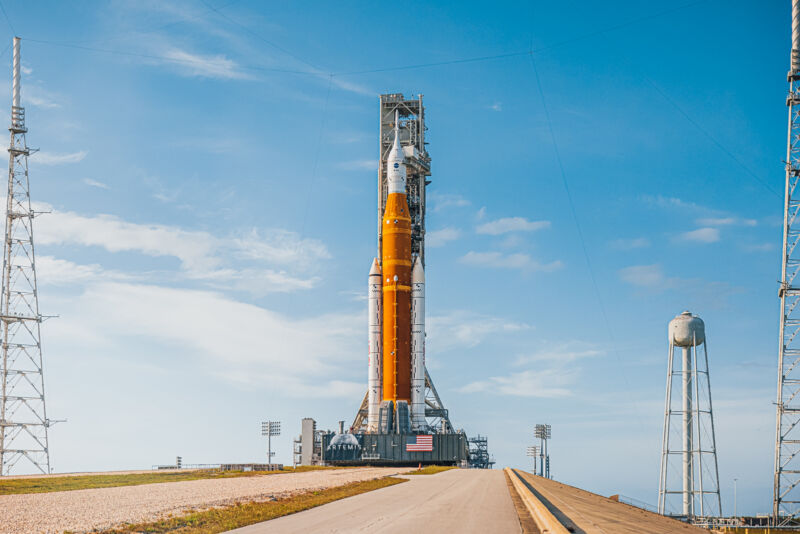
The US space agency has spent a long, long time designing, developing, building, and testing the Space Launch System rocket. When NASA created the rocket program in 2010, US legislators said the SLS booster should be ready to launch in 2016.
Of course, that launch target and many others have come and gone. But now, after more than a decade and more than $20 billion in funding, NASA and its litany of contractors are very close to declaring the 111-meter tall rocket ready for its debut launch.
On June 20, NASA successfully counted the rocket down to T-29 seconds during a pre-launch fueling test. Although they did not reach T-9 seconds, as was the original goal, the agency's engineers collected enough data to satisfy the requisite information to proceed toward a launch.
During a pair of news conferences last week, NASA officials declined to set a launch target for the mission. However, in an interview Tuesday with Ars, NASA's senior exploration official, Jim Free, said the agency is working toward a launch window of August 23 to September 6.
"That's the one we're targeting," Free said. "We'd be foolish not to target that right now. We made incredible progress last week."
Next up is rolling the SLS rocket and Orion spacecraft back to the Vehicle Assembly Building at Kennedy Space Center for final launch preparations, including arming the flight termination system. A team of technicians and engineers will also replace a seal on a "quick disconnect" where a hydrogen leak was observed during fuel loading.
This rollback could begin as early as Thursday, Free said, and workers have made their plans to process the vehicle during a relatively quick turnaround. "That group knows exactly what they need to do when we get back," he said. "I don't think we're stretching ourselves to get there. We're probably pushing ourselves a little bit, but we're not going to do something stupid." On this timeline, the SLS rocket could roll back to the launch pad in less than two months.
This Artemis I mission will not carry any humans on board but rather serve as a test flight for the massive rocket, the largest built by NASA since the Saturn V the agency used to fly the Apollo Program. A second mission, Artemis II, will fly a crew of four astronauts around the Moon. It likely will not occur before 2025. The first human landing on the Moon, Artemis III, will probably happen a year or two after the successful conclusion of Artemis II.
reader comments
284